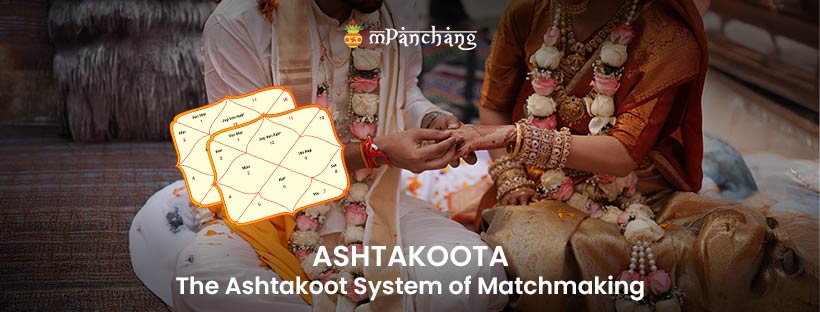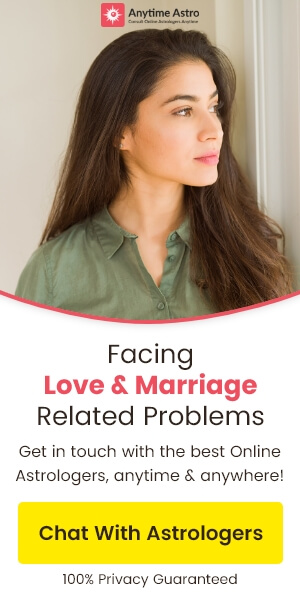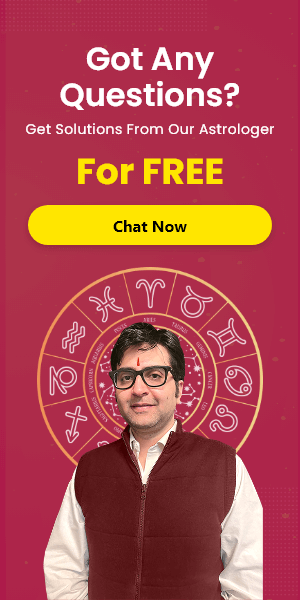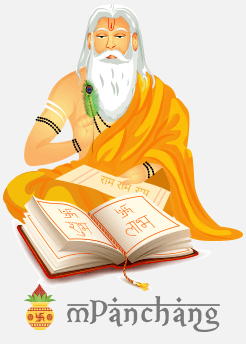Marriage holds a special place in indian culture, as it not only brings two individuals together but also connects their families, values, and future. One of the most important steps before marriage, especially in traditional indian households, is Kundli matching. This helps determine whether the couple will enjoy a compatible and happy married life.
One of the most widely followed methods of Kundli matching is the Ashtakoot system of matchmaking. But what is Ashtakoot meaning in astrology, and why is it considered so important? Simply put, Ashtakoot matching compares the birth charts of the bride and groom using eight key factors to check their compatibility. Each factor is scored to give a total out of 36 points, which helps in understanding how well the couple might align in different areas of life.
From emotional bonding and physical compatibility to financial stability and family life, Ashtakoot matching gives a detailed view of a potential relationship. If you are curious about how this ancient system works and how it can guide you toward finding your ideal match, read on. This blog will explain the Ashtakoot meaning, its components, and how it plays a vital role in Vedic matchmaking.
What is Ashtakoot Meaning in Astrology?
The word “Ashtakoot” is made up of two Sanskrit words: Ashta meaning eight, and koot or koota meaning category or aspect. So, the Ashtakoot system refers to the eight categories or aspects that are used to assess the compatibility between a prospective bride and groom.
The basic idea is to compare the birth charts of both individuals and calculate a compatibility score based on these eight kootas. The maximum score in Ashtakoota matching is 36 points, and a higher score indicates better compatibility between the couple.
But what exactly are these eight categories, and how do they help? Let’s take a closer look.
Why is Ashtakoota Matching Important?
Understanding the Ashtakoot meaning is essential when it comes to evaluating the success and harmony of a marriage. As we discussed earlier, in Indian culture, marriage is not just a personal bond between two individuals; it is also a union of two families, values, emotions, and life goals. That is why careful analysis through Kundli matching is considered a crucial step before marriage.
The Ashtakoota system studies eight key areas (or Kootas) that represent different aspects of life. These include mental and emotional compatibility, mutual attraction, sexual harmony, health, ability to handle family responsibilities, dominance in the relationship, financial prospects, and even the chances of having healthy children. All of these are important for building a strong foundation for a long-term relationship.
By examining these eight factors, astrologers can predict whether a marriage will be stable, joyful, and long-lasting. A high score indicates strong compatibility and fewer chances of conflict, while a low score may point toward potential struggles. This analysis not only helps in understanding the couple's overall match but also offers remedies in case of weak compatibility.
In short, knowing the Ashtakoot meaning helps couples and families make informed decisions, ensuring that their marriage begins with clarity, harmony, and mutual understanding.
The 8 Kootas of the Ashtakoot System
In the Ashtakoot system of Kundli matching, compatibility is measured using eight different aspects, known as Kootas. Each Koota represents a specific area of life, such as personality, health, emotions, or family life. These eight Kootas are compared between the bride and groom to calculate a total score out of 36 points. The higher the score, the better the compatibility. This method is a key part of free Janam Kundali analysis, helping individuals understand how well-matched they are with a potential life partner. Let’s explore each of these Kootas and what they mean.
Varna Koota (1 Point)
Varna represents the individual’s spiritual compatibility and nature. It is based on the caste system (Brahmin, Kshatriya, Vaishya, Shudra) but more in terms of character and temperament rather than social status.
- If both partners belong to the same Varna, they score 1 point.
- Otherwise, 0 points are awarded.
Vashya Koota (2 Points)
Vashya refers to the mutual control, influence, and dominance between partners. It checks how easily the couple will adjust and accept each other.
- If both belong to the same Vashya group, full 2 points are awarded.
- Partial or no match receives 1 or 0 points.
- This factor highlights the emotional balance and control within the relationship.
Tara Koota (3 Points)
Tara examines birth star (Nakshatra) compatibility and assesses the health and longevity of both partners. It is also used to predict mutual support in times of stress.
- The better the alignment of Nakshatras, the higher the points.
- 3 points is the maximum score for perfect compatibility.
- Understanding Tara Koota is a key part of grasping the Ashtakoot meaning in marriage astrology.
Yoni Koota (4 Points)
Yoni represents sexual compatibility and physical attraction between the couple. Each Nakshatra is linked to an animal symbol, and compatibility is measured based on these pairs.
- Points are awarded based on whether the two animal types are friendly, neutral, or unfriendly.
- If they match well, up to 4 points are given.
- A strong Yoni Koota score ensures physical harmony and satisfaction in married life.
Graha Maitri Koota (5 Points)
Graha Maitri focuses on intellectual and emotional compatibility. It compares the Moon signs of both individuals to see if their basic thought processes and personalities align.
- Same Moon signs or friendly signs earn higher scores.
- The highest score is 5, which indicates great mental understanding.
- This koota is especially important for friendship and emotional bonding in marriage.
Gana Koota (6 Points)
Gana reflects a person’s nature and behavior. Individuals are divided into three Ganas: Manushya (human), Rakshasa (demonic), and Deva (divine).
- Matches within the same Gana or compatible Ganas receive higher points.
- The maximum score is 6 points
- This factor helps predict how the partners will behave in various situations and if they can live in harmony.
Bhakoot Koota (7 Points)
Bhakoot evaluates emotional bonding, financial growth, and long-term prosperity. It also determines how their Moon signs relate to each other in terms of direction and placement.
- A favorable Bhakoot score is 7 points.
- Certain combinations are considered inauspicious and score 0.
- This koota directly affects the success of the couple’s family life and mutual growth.
Nadi Koota (8 Points)
Nadi is the most important factor, carrying the highest weight. It evaluates genetic compatibility, health, and the possibility of having healthy children.
- There are three Nadis: Aadi, Madhya, and Antya.
- Partners with the same Nadi score 0.
- If their Nadis are different, they get the full 8 points.
- This ensures good health for the couple and future generations.
Scoring in Ashtakoot Guna Milan
Once each of the eight kootas is analyzed, the points are added up to get the total compatibility score.
Guna Points Compatibility Result
Less than 18 Not suitable for marriage
18 - 24 Average compatibility – marriage possible
24 - 32 Good compatibility – marriage recommended
32 - 36 Excellent match – ideal for marriage
The more points a couple scores, the stronger the compatibility. But if the score is less than 18, it is usually not recommended to go ahead with the marriage without astrological remedies. For personalized guidance, you can get help through a free astrology chat with an experienced astrologer.
Ashtakoot Matching and Modern Relationships
While the Ashtakoot meaning and system are deeply rooted in tradition, many individuals today wonder if it still holds value. The answer depends on your belief in astrology. For those who trust Vedic principles, Ashtakoot matching or kundali matching by date of birth only provides helpful insight into key areas of a relationship.
It is not about predicting doom or perfection; it is about understanding strengths and challenges before entering into a lifelong commitment. Think of it as a tool for better communication and preparation, not a final verdict.
Conclusion
The Ashtakoota system of matchmaking is a comprehensive and structured way to evaluate marriage compatibility using Vedic astrology. By examining eight different aspects it helps couples understand how well they align in different areas of life.
Understanding the Ashtakoota meaning allows families and individuals to make informed decisions before tying the knot. However, it is important to remember that astrology is just one part of a successful relationship. Love, trust, communication, and mutual respect are just as important as Guna scores.
Whether you strongly believe in astrology or are simply curious, the Ashtakoota system can be a helpful guide in the journey of finding your life partner.


 ज्योतिषी से चैट करें
ज्योतिषी से चैट करें










Leave a Comment